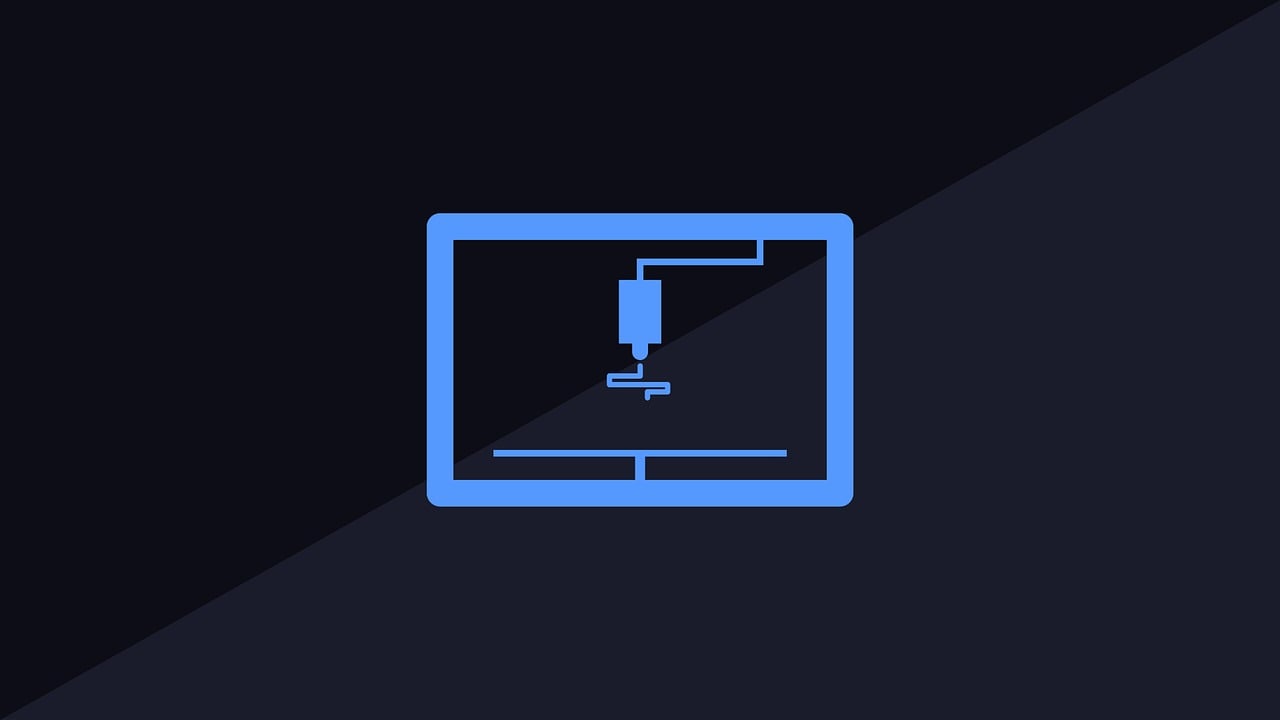In an era defined by rapid technological evolution, small businesses are pioneering new frontiers in innovation throughout 2025. From AI-driven customer insights to blockchain-enabled supply chains, these advancements empower entrepreneurs to redefine efficiency, customer engagement, and growth strategies. As competitive pressures intensify, adopting platforms like Shopify, Stripe, and Salesforce becomes crucial for agility and market responsiveness. Meanwhile, tools such as Slack and Zoom facilitate seamless remote collaboration, enabling teams to transcend geographical limitations. This remarkable fusion of technology with entrepreneurial spirit is driving a surge of patent filings and fresh ideas, signaling a transformative wave that positions small businesses not merely as survivors but as leaders in the digital economy’s next chapter.
Transformative Tech Trends Empowering Small Business Growth and Efficiency
The landscape of small business operations is undergoing a profound transformation driven by innovative technologies that enhance both productivity and customer engagement. At the forefront are AI and machine learning, which provide actionable insights through predictive analytics—a game changer for inventory management and financial planning. For instance, companies adopting AI-led lead scoring platforms can automate client acquisition, freeing up valuable time and resources.
Cloud-based solutions play a pivotal role by offering unparalleled scalability and flexibility. Platforms like Salesforce and HubSpot allow organizations to centralize customer relationship management and marketing efforts, accessible anywhere via cloud infrastructure. This paradigm shift eliminates the barriers of traditional on-premises systems, fostering collaboration and responsiveness.
Internet of Things (IoT) connectivity is quickly gaining traction, especially in sectors like manufacturing and retail. Real-time monitoring and predictive maintenance made possible through connected devices not only reduce downtime—as demonstrated by a US-based automobile parts manufacturer reducing equipment downtime by 40%—but also optimize supply chains for improved reliability.
- AI and Machine Learning: Offers personalized customer experiences and predictive analytics for inventory and demand forecasting.
- Cloud-Based Platforms: Enables seamless remote work, enhances collaboration, and provides scalable infrastructure.
- IoT and Connected Devices: Facilitates smart product offerings, real-time monitoring, and operational efficiency.
- Blockchain Technology: Enhances security, transparency, and streamlines supply chain management.
- Customer-Facing Tools: Integration of payment solutions like Stripe and e-commerce platforms such as Shopify empower revenue growth and convenience.
| Technology | Operational Benefits | Business Impact |
|---|---|---|
| Artificial Intelligence | Improved decision-making; automation of lead management | Reduction in manual workload; enhanced customer targeting |
| Cloud Solutions | Flexible access; supports remote teams | Scalable operations; improved real-time collaboration |
| IoT Devices | Predictive maintenance; inventory tracking | Reduced downtime; optimized supply chains |
| Blockchain | Secure transactions; transparent audit trails | Boosted trust; efficient contract management |

Strategies to Overcome Budget Constraints While Embracing Digital Transformation
Embracing cutting-edge technology poses significant challenges for small businesses, particularly regarding budget limitations. However, smart strategic choices enable companies to leverage transformative tools without incurring prohibitive costs. One key strategy is prioritizing technologies with the highest impact, such as adopting cloud-based platforms like Zoom for communication and Airtable for project management, which offer flexible subscription models that avoid upfront expenditure.
Free and open-source software plays an invaluable role, providing access to capable tools like open-source CRM systems and collaboration software alternatives to premium products. Additionally, government grants and tax incentives aimed at digital innovation provide vital financial support. Entrepreneurs should actively seek these opportunities to offset innovation costs.
Furthermore, subscription models offered by companies like Shopify or Square reduce the barrier to entry for adopting advanced e-commerce and payment systems. By shifting from ownership to as-a-service consumption models, small businesses maximize financial agility and access continuous updates.
- Focus on High-ROI Technologies: Invest in AI, cloud solutions, and automation tools that directly boost productivity and customer engagement.
- Leverage Subscription Services: Utilize cloud-hosted software like Zoom and Canva to maintain flexible budgets.
- Use Open-Source Tools: Explore free alternatives with active communities for CRM, marketing, and workflow automation.
- Apply for Grants and Incentives: Seek out government and local programs supporting technology adoption.
- Optimize Current Investments: Integrate tools using platforms like Zapier to automate workflows without extensive new spending.
| Approach | Benefit | Examples |
|---|---|---|
| Subscription Models | Lower upfront cost; ongoing feature updates | Shopify, Zoom, Slack |
| Open-Source Solutions | Cost savings; community support | Open-source CRM, LibreOffice |
| Government Programs | Financial assistance; tax breaks | Federal Innovation Grants, SBA loans |
Boosting Revenue with Advanced Customer-Facing Technologies
Customer experience remains a decisive factor in small business success, with technology serving as a powerful enabler to exceed expectations. Enhanced e-commerce platforms, widely adopted via Shopify and integrated with payment gateways like Stripe and Square, allow for streamlined, mobile-optimized shopping experiences. This facilitates easier transactions and directly uplifts sales performance.
Personalization technologies harness AI-driven customer insights to adapt marketing and product suggestions dynamically. Businesses that implement HubSpot or Salesforce marketing automation see higher engagement due to unique, finely tuned experiences. These technologies leverage data analytics to predict preferences and deliver personalized content efficiently.
Omnichannel communication tools unify customers’ touchpoints across messaging apps, social media, and email. Platforms such as Slack integrated with CRM systems ensure consistent messaging and rapid customer support. Additionally, emerging augmented reality (AR) applications enable immersive retail experiences—for instance, virtual try-ons that boost engagement and conversion rates.
- Enhanced E-commerce Platforms: Mobile-friendly design and integrated payment options increase customer satisfaction.
- AI-Powered Personalization: Tailored content and offers based on real-time customer data.
- Omnichannel Communication Tools: Unified messages via social media, email, and messaging apps.
- Augmented Reality in Retail: Interactive product experiences augment customer interaction.
- Payment Integration: Utilizing Stripe and Square for seamless transaction processing across platforms.
| Technology | Customer Benefit | Business Advantage |
|---|---|---|
| Shopify E-commerce | Seamless shopping experience | Increased online sales and reach |
| AI Personalization | Relevant recommendations | Higher conversion rates |
| Omnichannel Tools | Consistent communication | Improved customer loyalty |
| AR Retail Tools | Engaging product interaction | Boosted customer engagement |

Enhancing Back-Office Operations: Automation, Analytics, and Security
Back-office innovations are dramatically improving how small businesses manage finances, inventory, and human resources in 2025. Modern accounting systems integrated with AI offer real-time insights and automate repetitive tasks, freeing up management to focus on strategy rather than paperwork. Tools like Airtable and Salesforce’s backend applications simplify data tracking and analytics.
Inventory management has been revolutionized by predictive solutions that analyze demand trends to optimize stock levels, significantly reducing waste. Manufacturer and retailer collaborations benefit from supplier management platforms ensuring timely deliveries and transparent communication.
Employee management software enhances human capital strategies by streamlining recruitment, performance evaluations, and training initiatives. Meanwhile, cybersecurity remains a top priority. Small businesses implement multi-factor authentication, cloud security services, and ongoing staff awareness programs to protect sensitive data against advanced threats.
- AI-Enabled Accounting Systems: Automate invoicing and financial reporting.
- Predictive Inventory Management: Optimize stock to meet demand efficiently.
- Supplier Management Platforms: Improve supplier communication and reduce delays.
- HR and Employee Solutions: Facilitate recruitment and employee engagement.
- Enhanced Cybersecurity: Multi-factor authentication, regular updates, and training.
| Technology | Functionality | Benefit |
|---|---|---|
| Airtable & Salesforce | Data management and automation | Improved operational efficiency |
| Predictive Inventory Tools | Demand forecasting | Reduced waste and stockouts |
| Supplier Management Platforms | Enhanced communication | Streamlined supply chains |
| Cybersecurity Measures | Threat detection, employee training | Data protection and compliance |

Comparison of Key Technologies for Small Business Success
| Technology | Primary Benefit | Accessibility | Integration Ease |
|---|
How Small Business Innovation is Driving Economic Growth and Job Creation
Small businesses in the United States are at the heart of an innovation surge that is revitalizing sectors ranging from healthcare to sustainable manufacturing. In the first quarter of the year, a record 12% rise in patents filed by small enterprises highlights their expanding role as innovation leaders. This growth not only fosters competitiveness but also creates quality jobs, with a reported 9% increase in job creation within these dynamic firms.
Access to government funding, advances in technology such as AI and 3D printing, and the normalization of remote collaboration have synergized to enable small businesses to develop novel products more efficiently and cost-effectively than ever before. Innovations like AI-powered diagnostic tools in healthcare and eco-friendly manufacturing methods underline the broad economic impact.
Community support via local innovation hubs and stronger partnerships with large corporations through accelerator programs have further propelled this momentum. While challenges remain—including scaling technologies and navigating patent complexities—the overall outlook for small business-led innovation remains highly optimistic.
- Patent Growth: 12% increase in patent filings among small firms.
- Job Creation: 9% rise in new jobs within innovative small businesses.
- Sector Diversity: Innovations span healthcare, manufacturing, and IT.
- Government and Community Support: Grants, incubators, and partnerships enhancing capabilities.
- Future Outlook: Continued growth driven by sustainability and digital transformation.
| Focus Area | Impact | Example |
|---|---|---|
| Healthcare Technology | Improved diagnostics and telehealth | AI-powered tools reducing misdiagnosis rates |
| Sustainable Manufacturing | Eco-friendly materials and processes | Plastic waste recycling for construction materials |
| Information Technology | Cybersecurity, data analytics | Remote collaboration software innovations |
As small businesses continue to innovate, their contributions to economic resilience and technological leadership become invaluable, cementing their role as key drivers of prosperity.
Strategies for building resilient businesses in uncertain times
Integrating resilient business strategies with evolving technology is crucial in today’s competitive market to sustain growth despite unforeseen challenges.
Discover more insights on resilience and innovation.
What Are the Key Technology Trends That Small Businesses Should Be Aware Of?
Keeping pace with technological trends such as AI, cloud computing, IoT, and blockchain ensures small businesses are prepared to innovate and remain competitive.
How Can Small Businesses With Limited Budgets Effectively Adopt New Technologies?
Prioritizing high-impact tools, leveraging free or subscription-based solutions, and seeking government grants are essential strategies.
What Benefits Do Customer-Facing Technologies Offer?
They enhance customer satisfaction by facilitating seamless shopping, personalized engagement, and consistent communication, leading to higher sales.
How Can Small Businesses Ensure the Security of Their Technology Systems?
Implementing multi-factor authentication, regular software updates, employee training, and cloud-based security solutions are crucial.
What Are Common Challenges In Adopting New Technology and How Can They Be Overcome?
Resistance to change, skill gaps, and integration issues can be addressed through training, strategic planning, and phased implementation.
